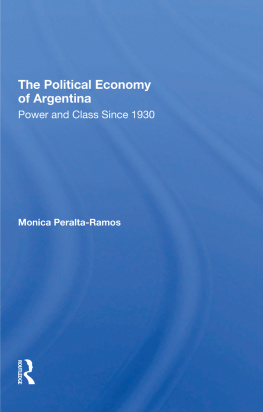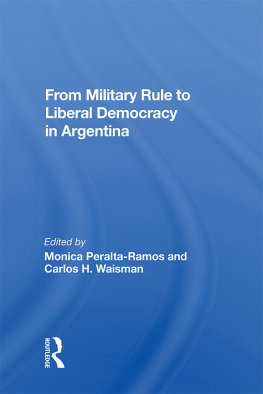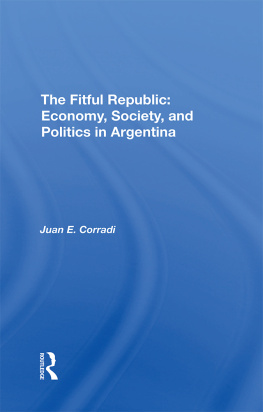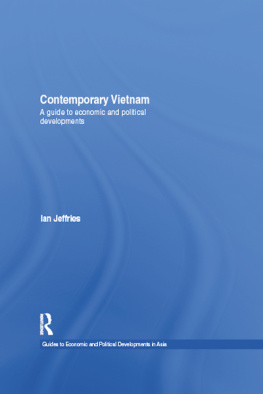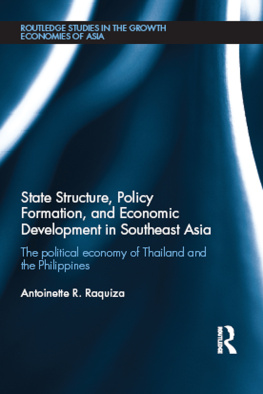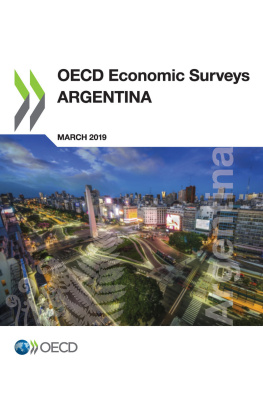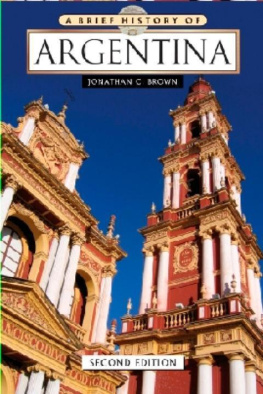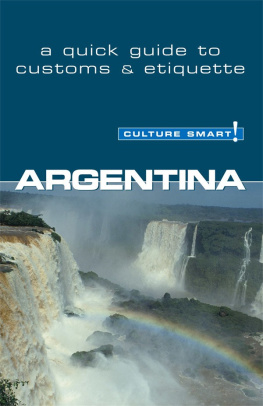First published 1992 by Westview Press
Published 2019 by Routledge
52 Vanderbilt Avenue, New York, NY 10017
2 Park Square, Milton Park, Abingdon, Oxon OX14 4RN
Routledge is an imprint of the Taylor & Francis Group, an informa business
Copyright 1992 by Taylor & Francis
All rights reserved. No part of this book may be reprinted or reproduced or utilised in any form or by any electronic, mechanical, or other means, now known or hereafter invented, including photocopying and recording, or in any information storage or retrieval system, without permission in writing from the publishers.
Notice:
Product or corporate names may be trademarks or registered trademarks, and are used only for identification and explanation without intent to infringe.
Library of Congress Cataloging-in-Publication Data
Peralta-Ramos, Mnica.
The political economy of Argentina: power and class since 1930 /
Monica Peralta-Ramos.
p. cm. (Westview special studies on Latin America and the
Caribbean)
Includes index.
ISBN 0-8133-7556-8
1. ArgentinaEconomic conditions1918- 2. ArgentinaPolitics
and government1910- 3. Social conflictArgentinaHistory20th
century. 4. PeronismHistory. I. Title. II. Series.
HC175.P42 1992
338.982dc20
91-22385
CIP
ISBN 13: 978-0-367-29485-4 (hbk)
Two dominant traits of Argentina's political life have been the inability of political elites to reconcile conflicting interests and the resolution of conflict through coercion rather than consent. These traits persist today even though nearly 200 years have passed since Argentina won its independence from Spain. In this book, I argue that these traits derive from the dominance of the struggle for economic power over other forms of social confrontation. Although the political conflicts that followed emancipation from Spain were centered on the institutional organization of the country, they were rooted in a contest for control of strategically important economic resources. In effect, the struggle between the people who demanded a centralized government and those who sought to preserve the autonomy of the provinces cloaked a more basic conflict, namely, the refusal of the interior of the country to accept a power structure that subordinated all the provinces to the economic interests of the port of Buenos Aires. From the first, then, political confrontation was a result of economic tensions.
This book deals with the persistence of the two dominant traits from 1930 onward by analyzing the shifting power relationships among different classes. As a result of these relationships, speculation has replaced productive investment, and inflation and economic stagnation are the order of the day. The international crisis that occurred in 1930 signaled the beginning of a period in which industry became the dynamic element in Argentina's economic expansion, but the industrialization process also gave birth to power relations and social conflicts that continue to plague the country. Since the 1930s one can observe the recurrence of both a crisis of institutional legitimacy and an unrelenting struggle for the appropriation of income among the various classes and class segments. The latter struggle led to the emergence of two distinct types of conflict: one between the agrarian, industrial, and financial segments of the bourgeoisie and the other between the working class and the bourgeoisie as a whole.
This book examines Argentina's economic stagnation and political instability in the light of the changes occurring in the relations of force among the different social classes. Implicit in my analysis is the assumption that power relations in a society are distinguishable at economic, political, and cultural levels. These relations constitute a dynamic, unstable equation of domination-subordination, which while potentially conflictive does not necessarily result in open conflict. When open conflict does occur, relations of force are established in the complex web of social actors.
analyzes how the policies of industrialization pursued by successive governments affected class fragmentation and power relations. The international crisis of 1930 generated the conditions for the formation of a class alliance favorable to industrialization. After the scheme of the international division of labor that had predominated since the nineteenth century ceased to function adequately, the domestic market acquired a growing importance, and a limited industrialization became the most rational alternative to the dominant agrarian bourgeoisie. This segment of the bourgeoisie supported an industrialization that, although sufficient to replace some imports of manufactured products, was insufficient to alter the economic structure of the country, which was centered on agricultural exports. However, the process of industrialization helped form a class alliance bent on a model of development that was radically opposed to that of the governing elite, and the strong presence of foreign capital in the manufacturing sector generated divisions and groupings among the bourgeoisie that had not been present in the classic model of capitalist development. Instead of provoking a conflict between agrarian and industrial capital from the outset, Argentina's industrialization gave rise to a confrontation between segments of the industrial bourgeoisie itself. Moreover, the process of industrialization brought an increase in union membership and labor mobilization, although the stagnation of real wages and official intransigence in the face of repeated union demands for a share in the decisionmaking process demonstrate that in the development model of the governing elite, the working class had virtually no role.
In a context of increasing social confrontation, neither the working class nor the small and medium-sized industrial bourgeoisie had institutional channels that would enable them to express either their protest or their desire to participate in the decisionmaking process. Once again, deep-seated rivalries over economic interests prevailed, rendering the political system incapable of ensuring a smooth transition from one development model to a different one. Instead, transition occurred as a result of a military coup in June 1943, a coup that led to a new political phenomenon in Argentina Peronismo.
Peronismo represented the alliance between the interests of the national segment of the industrial bourgeoisie and those of the working class. Once in power, Peronismo had as its main objective the conciliation of the interests of capital with those of labor. Between 1946 and 1955, a major confrontation occurred between two class blocs and was expressed in terms of two models of development. On one side, the stronger segments of the bourgeoisie demanded a return to the limited industrialization model and to a strict control of popular demands. On the other side, the government sought to force the accelerated development of national industry based on a redistribution of income toward labor and transfers of rural income to industry. It also restricted the influence of foreign capital in the economic and political life of the country. The opposition on the part of the most powerful segments of the bourgeoisie managed to erode the prevailing power structure when redistribution of income to labor began to have a negative effect on the actual profit rate.

